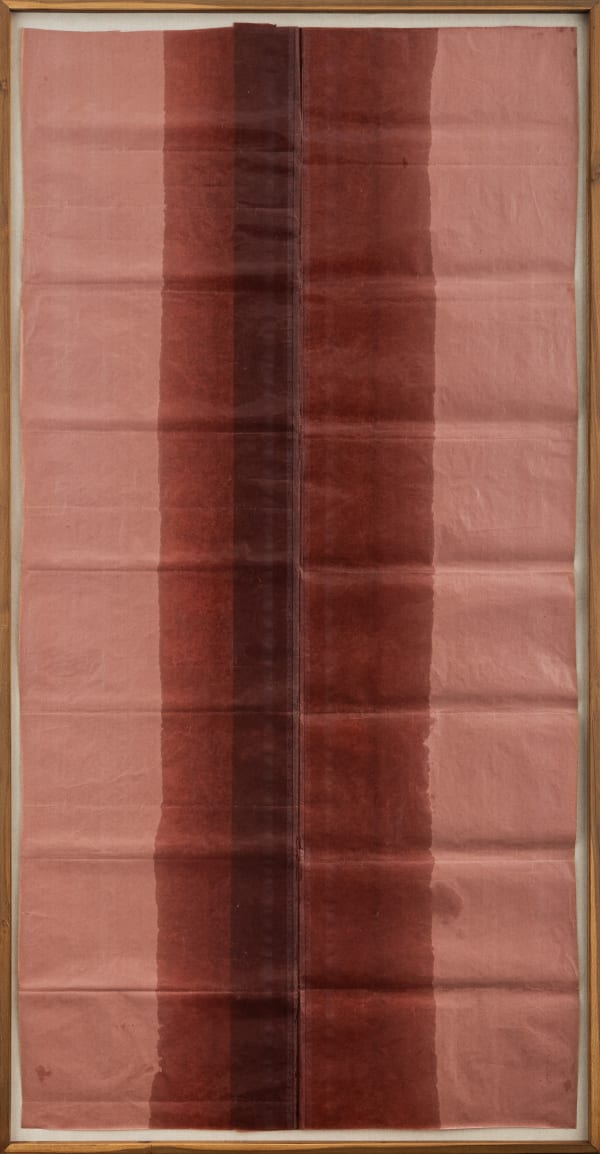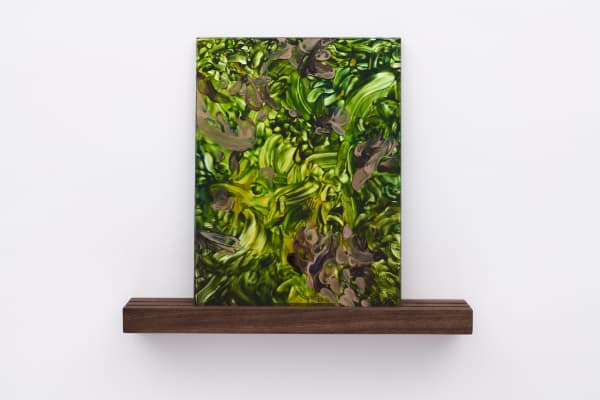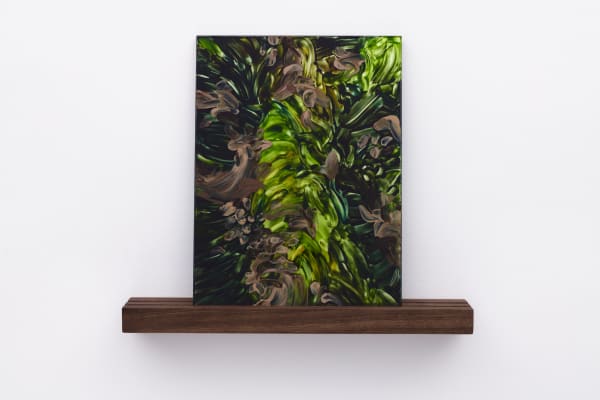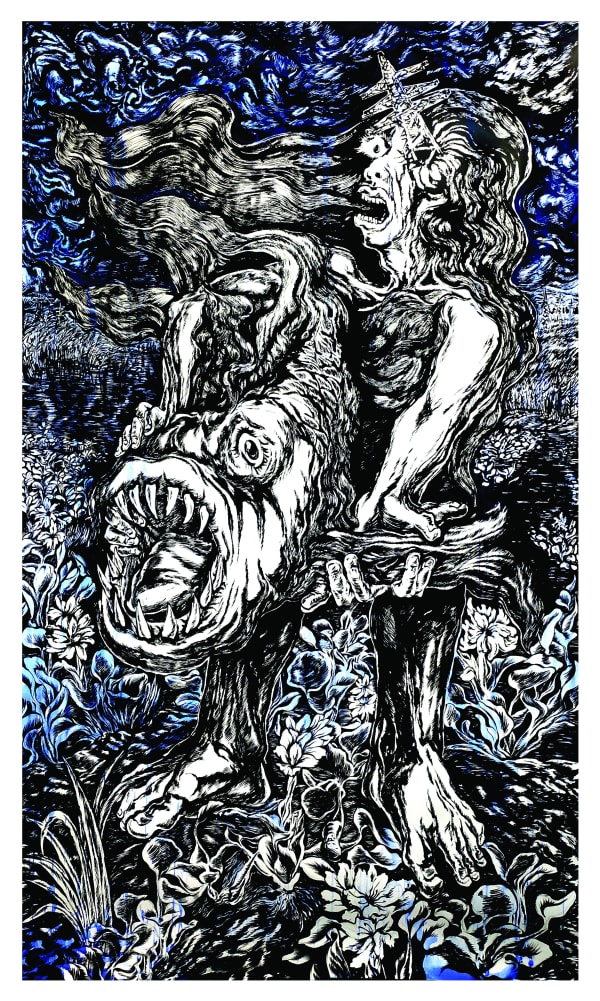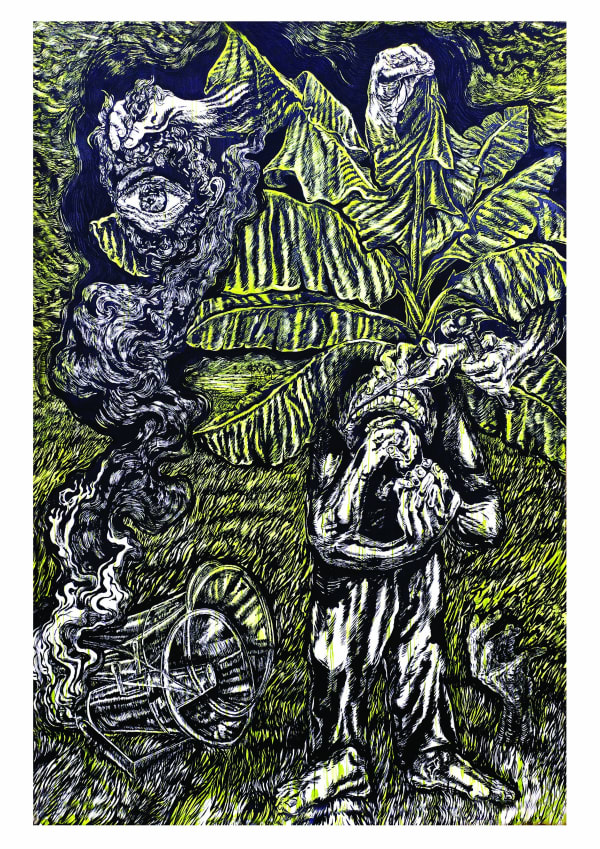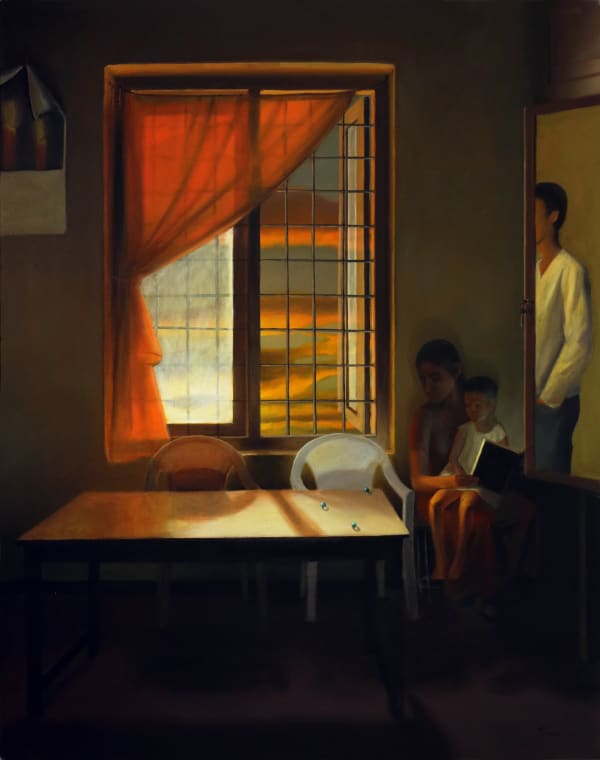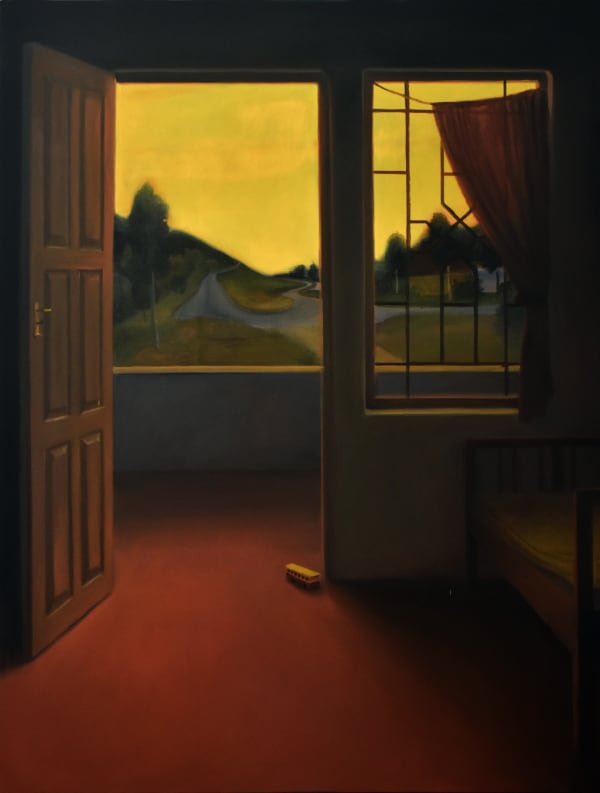Project 88 presents artworks that invite reconsiderations of our sensorial and perceptual frameworks through closer examinations of seemingly mundane details, discrepancies, and realities within our daily lives. These enable us to intimately understand, and even reorient our relationships to the interior as well as terrestrial worlds that we inhabit.
Neha Choksi’s paintings on glass capture a dense foliage. Leaning against the wall, they reflect her explorations of “barriers and access and portals and communication,” engaging literally with gestures of ‘reaching’ or ‘depending,’ as their titles suggest.
In Anupam Roy’s works, senses of self-reflection and political consciousness that investigate biopolitical synergies are fused to propose counter-narratives that undermine hegemonic structures governing existing landscapes.
Amitesh Shrivastava’s oil paintings, Right Light and Tasty Land employ dynamic strokes of colour, balancing light and temperature, to collapse demarcations between figures and backgrounds. These direct attention towards sensory experiences and emotional connections that we can forge with our own surroundings.
Mahesh Baliga’s paintings expose seemingly minor dissonances within regular days to expose larger themes of choice, finality, the cleansing of landscapes of dejection, as well as the loss of natural homes. They demand acute engagements with what seems familiar, compelling us to reexamine our daily lives with scrutiny.
Tom Vattakuzhy’s meditative oil paintings feature subdued colours and evocative juxtapositions of light and shadow, combining observed realities with representations of the interior lives of “the silenced, the marginalized and the alienated.” His poignant depictions evoke themes of isolation through gesture and posture.
Hemali Bhuta’s She tore the fold and Fold and Leak emphasise processes of disintegration, mending and healing by working closely with the folds of stored packaging paper, stained and blotted with oil. The works showcase how simple interventions with domestic objects can open up deliberations on concepts of temporality, unity with surroundings, form and materiality.
Amol Patil’s kinetic installations conceptually interpret motions that frame the lives of labourers at industrial sites – from insects whirring around stagnant water, to the bubbling of water that softens the ground on construction sites, to the land breathing as it soaks in this water. The works emphasise these somewhat rhythmic movements, to shed light on the conditions that workers endure.





